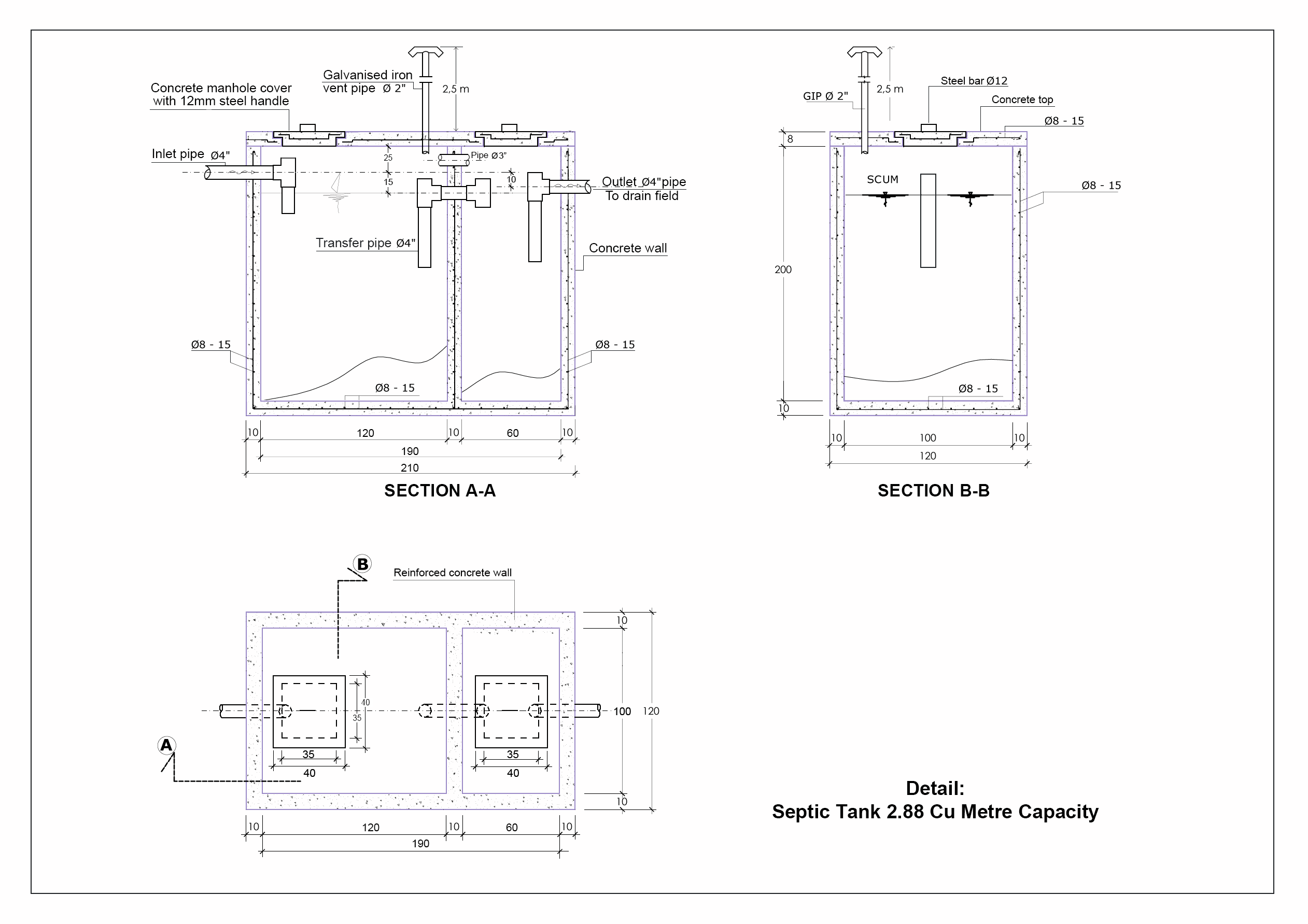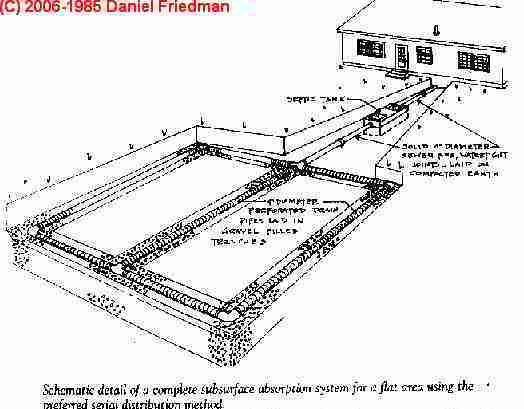Table Of Content

It’s important to remember having a septic tank requires regular pumping to maintain its functionality. Without routine maintenance, septic tanks can become a source of pollution. But a small price to pay for the immense environmental contribution it offers and, let’s be honest, the ability to do your business in peace at home. Professional draining and cleaning of a septic system are often required every two years.
How to Maintain the Septic Tank
Sturdy 55-gallon barrels are used as the underground tanks and are very inexpensive to purchase. There is a better way and it’s called a doggie septic system by Instructables and it’s an easy DIY project. It’s a private, un-noticeable, odor-free place for your dog to relieve himself and you won’t have to pick up what he drops anymore. The time-lapse video depiction is likely to maintain a faster pace, still managing to cover the task.
Property owners could 'supersede' Indiana health officials over septic systems, under House bill • Indiana Capital ... - Indiana Capital Chronicle
Property owners could 'supersede' Indiana health officials over septic systems, under House bill • Indiana Capital ....
Posted: Wed, 29 Mar 2023 07:00:00 GMT [source]
Video
Simple fittings will attach the empty barrel under the ground with the inlet PVC pipe. Fill the trench with all excavated soil after pouring some water for soil compaction. The major portion of the DIY work concerns with digging trenches up to a suitable depth. After getting done with the digging, you’re to assemble one drum/barrel with pipes.
Step 1: Understand Your Requirement
Site election is arguably the most important part of building a winter shelter. Avoid areas with unstable snowpack as these are prone to avalanches and landslides. Flat, well-drained spots away from strong winds are going to be your best bet.
There are a variety of materials to think about and septic tank options to choose from if you’re in the market for a new septic system or just want to replace an old septic tank. There is a lot riding on the success of a new septic tank installation. Keep in mind that your new tank will serve an important plumbing purpose in your home for many years to come. When building your new septic tank, the material you choose will be among the most crucial considerations. Concrete block septic tanks are widely used because of their weight, strength, and longevity.
Building and Using a Precast Septic-Tank Root Cellar – Mother Earth News - Mother Earth News
Building and Using a Precast Septic-Tank Root Cellar – Mother Earth News.
Posted: Wed, 04 Mar 2015 08:00:00 GMT [source]
A do-it-yourself septic tank is one definite cost-saving project for any interested DIYer. Right there, you’re set to gather the necessary materials for the job. Piece by piece, you’ve now built a sustainable system that can last for decades with the right care. The steps of constructing and installing a septic tank might seem intimidating at first, but with passion and patience, the process can be very rewarding. Upon finalizing the location and design, the next phase involves preparing a detailed blueprint for the septic tank’s construction. Working like your very own personal treatment plant, the septic tank is a humbling testament to innovation and practicality.
–A Larger DIY Tank Septic System

Well, these microscopic warriors in the septic tank break down organic matter in the sludge layer. This process generates gases that are then vented out of the tank. Typically, the first inspection should occur within the first year after installation to ensure everything is functioning correctly. Annual inspections should be scheduled to provide comprehensive checks and septic system maintenance and pumping should be scheduled every 2-3 years.
How To Setup A Septic Tank In 30 Minutes Or Less!
In addition, if there is too much water in the septic tank because of a plumbing leak, the system could get overloaded. Septic systems come in various types, including conventional gravity systems, mound systems, and alternative systems. The choice of system depends on property-specific factors and local regulations. There should be no rush to backfill the concrete tanks until the leaks have been thoroughly checked. The final health department inspection is recommended before performing the final backfilling.
Although a little more sophisticated, the gravity feed septic system is still a relatively simple system to install. The size of tanks and the number of infiltrators will depend on the number of bedrooms in your home. Most hardware stores will have the necessary supplies for this system.
There are various types of winter shelters that can keep you warm and safe in cold weather emergencies. There’s no reason to be paranoid, but having these skills in your back pocket can make the difference between life and death if you ever find yourself in a winter emergency. Building an off-grid septic system with totes is a testament to ingenuity and sustainability. This system capitalizes on the adaptability and availability of totes, offering a practical and eco-conscious waste solution for those living beyond the grid.
The septic tank is drained out after a specific period by sucking the waste throughout the outlet. There are a variety of materials that can be used to construct septic tanks, including concrete, concrete blocks, high-density plastic, fiberglass, and fiber-reinforced plastic. Metal tanks were once permitted but are now banned due to corrosion concerns. Many homeowners, lured by plastic tanks’ lower up-front cost compared to concrete blocks, fail to do a thorough cost comparison before making their decision. Spending less now may seem appealing, but a low-quality plastic tank may lead to greater maintenance costs down the road. Furthermore, fiberglass septic tanks are not easily available since they are not approved by many regulatory agencies.
Doing so sets you on a course to take charge of your waste management, improve sanitation, and ultimately contribute to the betterment of our environment. A well-planned and correctly installed septic system is key to maintaining a sanitary environment in your home and surrounding places. Before beginning any construction work, thoroughly examining the situation is generally a good idea.
You’re to install one enormous tank or build yourself one with concrete or sturdy polymer coverage. The rest of its implementation is easy, letting you make the pipe connections. You’re to establish a connection for 3” PVC pipes after excavating the targeted soil. The video comes describing the system rather than showing the construction process. Although it appears one professional DIY plumbing job, the whole process comes simple.
By following the steps outlined here, you can ensure a smooth installation process and long-term functionality of your septic system. Remember to consult local regulations and seek professional assistance if needed. With proper care and maintenance, your DIY septic tank can efficiently manage household wastewater for years to come.
Of course, the setup requires considerable time in digging a large pit with several trenches. But simple modifications manage to keep the work simple enough for limited hands. One essential fact concerns with the leveled installation of the containers.
Remember to maintain access to your tank’s inspection ports, perhaps by installing risers for easier location and access. Cover the septic tank, distribution box, and drain field with good materials made of either concrete, steel, or any other hard material maintaining easy access. The video documents how to build a low-cost, off-the-grid tote tank septic system. Totes are large plastic liquid containers that are housed in a protective steel/aluminium frame.


No comments:
Post a Comment